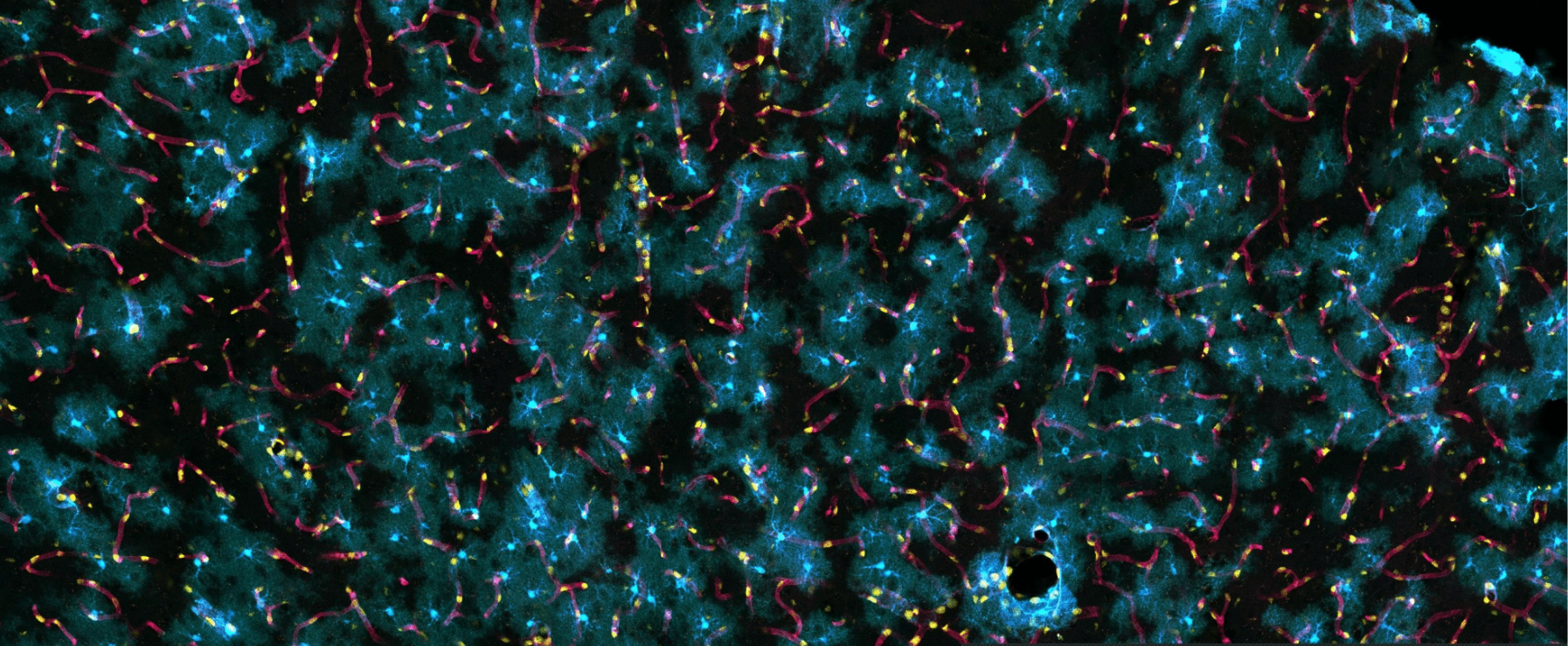
Our research focuses on investigating astrocyte-vasculature interactions and their importance for brain function, its communication with the periphery, and the development of dementia.
Our aim is to deepen the understanding of the molecular and cellular mechanisms that link brain vascular dysfunction and dementia with the hope that our results will be translated into the development of early diagnostic methods and treatments.
Introduction
Unlike other organs, the exchange of substances between the blood and the brain is tightly regulated by a multicellular functional entity called the Blood Brain Barrier (BBB). The BBB provides a cellular boundary that restricts the invasion of toxins and pathogens into the brain, controls the uptake of molecules from the blood, metabolizes nutrients and clears the brain of toxic by-products.
BBB properties are compromised with ageing. Remarkably, BBB dysfunction is one of the earliest observations in neurodegenerative diseases. Hence, vascular dysfunction is considered a key factor in the development and progression of pathological cognitive decline. In spite of the crucial function of the BBB and efforts made to understand the mechanisms that underlie its dysfunction, there are important aspects of BBB physiology that remain largely unexplored. How is the BBB maintained? How do the BBB cellular components interact? What are the molecular pathways leading to BBB dysfunction?
Astrocytes and brain endothelial cells
Brain endothelial cells (BECs), mural cells (smooth muscle cells or pericytes), and astrocytes cooperate to form a healthy BBB.
BECs form the first barrier between the blood and the brain parenchyma thanks to protein complexes called tight junctions (TJs) that keep BECs closely bound and control the exchange of substances through regulated transcellular transport mechanims.
Astrocytes have a unique strategic position in the brain by intimately contacting brain parenchymal cells, like neurons, and covering the vasculature of the brain through specialized structures called astrocyte endfeet.
Our research
The understanding of the BBB cell communication is necessary to better comprehend the BBB maintenance and pathology.
In the Blanca Díaz Castro lab we investigate the mechanisms of interaction of astrocytes and brain endothelial cells (BECs) with the objective of establishing their role in brain homeostasis and how they become altered in conditions that lead to dementia. The ultimate goal of our research is to identify disease biomarkers and molecular targets for treatment of neurological diseases.
Main objectives and research goals
1. Investigating the importance of astrocyte endfoot functions for brain physiology.
2. Targeting astrocyte-BEC interactions as therapeutic strategies to prevent cognitive decline.
3. Generating molecular tools to study BBB cell interactions.



